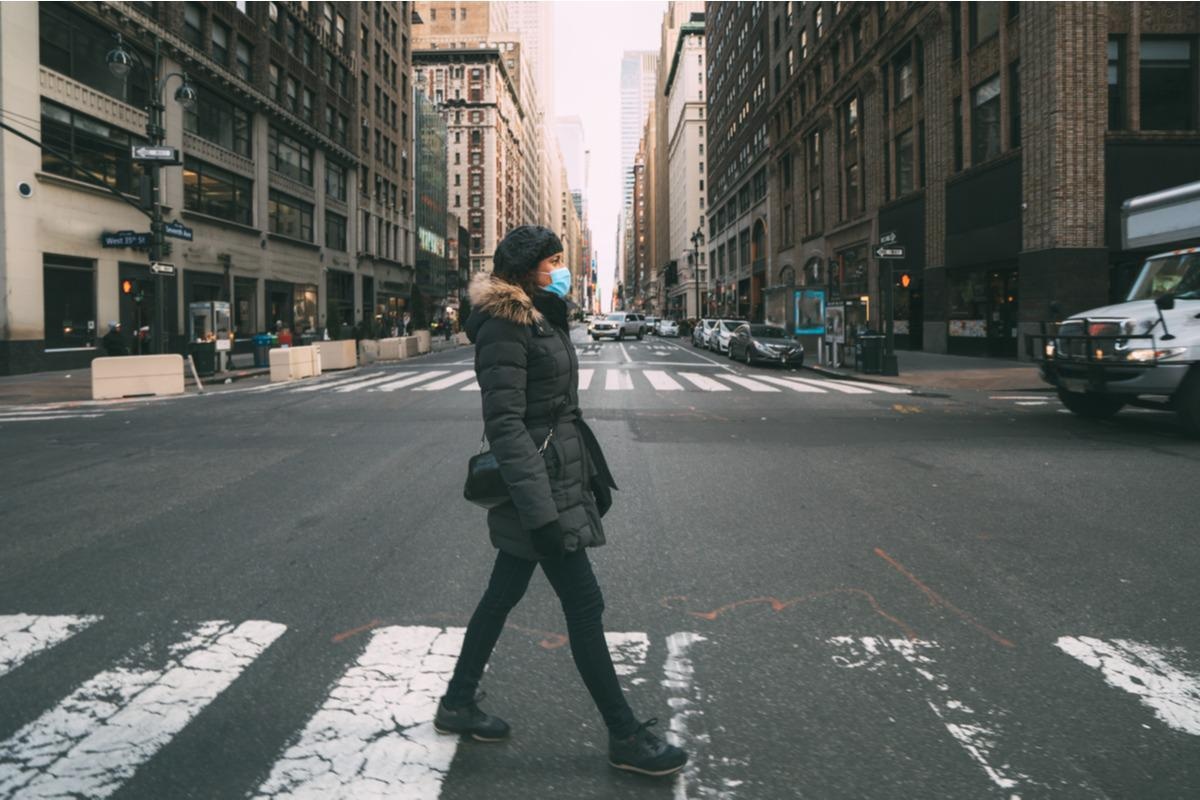In a recent study posted to the medRxiv* pre-print server, researchers surveyed a representative sample of the adult population of New York City (NYC), United States (US), to determine the prevalence of coronavirus disease 2019 (COVID-19). The researchers also assessed the epidemiology of infection and uptake of severe acute respiratory syndrome coronavirus 2 (SARS-CoV-2) antivirals.

Background
The study was conducted soon after the surge of SARS-CoV-2 new variant of concern (VOC) Omicron's sub-lineages, BA.2/BA.2.12.1. Routine SARS-CoV-2 surveillance is crucial because lack of data hinders the detection of the surge in COVID-19 cases, and incomplete and biased data hampers understanding of the burden of SARS-CoV-2 infection. All this data is crucial to inform public health policies to mitigate viral transmission and limit the number of COVID-19 cases.
About the study
In the present study, researchers conducted a cross-sectional survey among 1,030 NYC adult residents from May 7 to 8, 2022, to determine the surge in COVID-19 cases with the official case counts in NYC between April 23 and May 8, 2022. During this time, the official SARS-CoV-2 case count in NYC was 49,253, and 20% of these cases were due to Omicron BA.2/BA.2.12.2.
The researchers enquired the survey participants about SARS-CoV-2 test outcomes, COVID-19 or flu-like symptoms, and whether they came in contact with infected individuals 14 days before the survey. As feasible, the survey participants completed web-based surveys or provided interactive voice responses. From those who self-reported a positive reverse transcription-polymerase chain reaction (RT-PCR) or rapid antigen test (RAT), the researchers also enquired about the awareness and use of SARS-CoV-2 antiviral medications.
The study estimates accounted for socio-demographic data, including each participant's vaccination and prior infection status, and geographical location. The researchers assessed the association between each factor and test status using Pearson’s chi-squared test.
Study findings
The study estimated the prevalence of COVID-19 in approximately 1.5 million NYC adults during the two-week study period, with close to 20% cases due to the highly transmissible Omicron BA.2.12.1 subvariant. The study estimate was about 31-fold higher than the official NYC case count and indicated a vast underestimate of the magnitude of this surge.
Due to the differences in SARS-CoV-2 exposure and behaviors among people, COVID-19 was more prevalent in those who received a booster shot compared to those who were either unvaccinated or fully vaccinated but not boosted. These findings could help correct biases in vaccine effectiveness (VE) studies.
Moreover, the authors observed that SARS-CoV-2 was more prevalent in individuals with hybrid protection than those with vaccination-induced protection (28.9% vs. 10.7%). The findings indicated that prior SARS-CoV-2 infection was a good marker for exposure during surges and risk compensation. Hence, these individuals should be prioritized for first, second, and subsequent COVID-19 vaccine doses to help reduce the risk of severe disease and death. Notably, the awareness and uptake of nirmatrelvir/ritonavir were also low among the adults with SARS-CoV-2 infection.
Conclusions
Overall, the study data dictate taking additional precautions to reduce the risk of infections among the people of NYC and shift the approach to public health surveillance for SARS-CoV-2. The surge in COVID-19 cases in the US due to Omicron BA.1 during December 2021 claimed over 187,000 lives in four months. At this time, 62% of the US population had received the primary COVID-19 vaccination, yet, the deadly infection overwhelmed the health care system. Unfortunately, the official case counts vastly underestimated the magnitude of NYC’s Omicron BA.2/BA.2.12.1 surge.
As the COVID-19 pandemic progresses, several factors shall influence the scale of infection and severity levels among those most vulnerable to developing severe COVID-19. These factors are likely to vary by region, variant properties, such as transmissibility, severity, immune evasion, level of attained immunity via vaccination or prior infection, the time gap between the advent of case surges, and accessing antiviral and monoclonal antibody treatments.
Since the COVID-19 pandemic is complex and ever-evolving, routine passive surveillance is inadequate to monitor and respond to the case surges. It demands more vigorous, timely, and reliable approaches that account for geographic and socio-demographic variances and prevent delays in detecting the actual burden of infection in the general population. Therefore, population-based survey data is crucial for gathering rapid information that addresses the limitations of traditional SARS-CoV-2 case surveillance, hospitalizations, and deaths.
*Important notice
medRxiv publishes preliminary scientific reports that are not peer-reviewed and, therefore, should not be regarded as conclusive, guide clinical practice/health-related behavior, or treated as established information.
- Saba Qasmieh, McKaylee Robertson, Chloe A Teasdale, Sarah Kulkarni, Margaret McNairy, Luisa N Borrell, Denis Nash. (2022). The prevalence of SARS-CoV-2 infection and uptake of COVID-19 antiviral treatments during the BA.2/BA.2.12.1 surge, New York City, April-May 2022. medRxiv. doi: https://doi.org/10.1101/2022.05.25.22275603 https://www.medrxiv.org/content/10.1101/2022.05.25.22275603v1
Posted in: Medical Science News | Medical Research News | Disease/Infection News
Tags: Antibody, Antigen, Coronavirus, Coronavirus Disease COVID-19, covid-19, Epidemiology, Flu, Health Care, immunity, Monoclonal Antibody, Omicron, Pandemic, Polymerase, Polymerase Chain Reaction, Public Health, Respiratory, Ritonavir, SARS, SARS-CoV-2, Severe Acute Respiratory, Severe Acute Respiratory Syndrome, Syndrome, Transcription, Vaccine

Written by
Neha Mathur
Neha is a digital marketing professional based in Gurugram, India. She has a Master’s degree from the University of Rajasthan with a specialization in Biotechnology in 2008. She has experience in pre-clinical research as part of her research project in The Department of Toxicology at the prestigious Central Drug Research Institute (CDRI), Lucknow, India. She also holds a certification in C++ programming.
Source: Read Full Article
